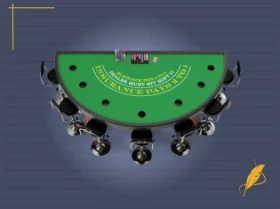Augmented reality and virtual reality are often mixed up but have distinct meanings. The first blends computer-made images, objects, and sounds with the real world, enhancing what we see and hear. In contrast, the second lets people dive into computer-generated environments.
Augmented virtuality holds promise in changing various fields. In healthcare, it can teach medical students how the body works. Construction is another area where it can shine, aiding builders and planners in making virtual models of projects in real spaces.
This article will delve into their definitions, distinctions, and types. If you’re curious to learn more, read on.
Understanding Augmented Reality
Augmented reality is a technology that overlays computer-generated information, such as images, text, or 3D models, onto the real-world environment. This technology is frequently experienced through mobile devices, smart glasses, or heads-up displays, providing users with an enriched and blended view of the physical and digital worlds. Some popular gadgets are Microsoft HoloLens and Magic Leap.
This innovation can do lots of things, like translating words with your camera, finding stars in the sky, or seeing how furniture would fit in your room. Apps like Snapchat and Pokemon Go use this technology. The main idea of augmented reality technology is just to make your real-life experience better.
Types of AR
There are two main types of this technology: marker-based and markerless. The second one has four main sections. Let’s check out both below.
Marker-Based Technology
Also called Image Recognition AR, it relies on markers or images to enhance the real world. Markers are recognisable patterns that cameras can easily identify and understand. These can be in the form of printed patterns on paper or physical objects from the real world.
Markerless Technology
This technology doesn’t rely on recognising images to generate visual information. It depends on mobile devices equipped with things like sensors, cameras, and microprocessors to enhance the experience. The varieties include:
- Location-Based: It uses the mapped location of a device to improve a physical environment with digital information. It relies on the device’s GPS and other sensors to accurately determine its location. It’s commonly used in virtual tourism.
- Projection-Based: As the name suggests, this solution involves projecting light onto a flat surface to enhance it with 3D imagery.
- Overlay: It replaces the normal view of real-world objects with an augmented virtual image of the same object.
- Contour-Based: Also known as outlining, this enhanced reality uses simultaneous localisation and mapping (SLAM) to outline silhouettes of objects and create realistic human interaction.
The Concept of VR
This technology refers to an immersive, computer-generated simulation that provides users with a lifelike experience in a virtual environment. Traditionally accessed through goggles and headsets, recent advancements extend accessibility via holograms and other evolving technologies, enhancing the overall user experience.
These smart glasses connect to a computer that creates fake but real-looking experiences. It tricks your eyes into thinking you’re in a different place. With head-tracking, when you move your head, the things you see in the goggles move, too, letting you look all around in this VR reality world.
Types of VR Technology
There are many types of this simulated environment, but these five are the most influential:
- Non-immersive: It’s like a computer-made world that you can only see and play with on a computer. It doesn’t respond to what you do, and you don’t need special glasses to use it.
- Fully Immersive: It ensures you have a realistic experience in the computer-generated simulation. Users can feel everything present and happen to them in the imaginary environment. It is expensive because it requires a powerful computer and a dedicated headset device.
- Semi-immersive: This kind is a mix of feeling like you’re really there and just looking at a computer screen. It can be a made-up world, a regular computer display, or you might use special goggles. Nothing in the real world physically reacts to what you do; it’s all about what you see.
- Augmented: Unlike other types, in AR, using a mobile phone, fake things show up in the real world. They look like they’re really there, but they’re not. Businesses like printing and advertising use this advancement.
- Collaborative: This is a pretend world where people from different places hang out together in a fake place. An example is the game Call of Duty Mobile, where many players join in as virtual characters.
Virtual Reality vs Augmented Reality: Key Differences
If comparing virtual reality vs augmented reality, they are alike in some ways, but have notable differences. However, these distinctions don’t mean one is better than the other. Both have their uses in different ways.
| Comparison Criteria | AR | VR |
|---|---|---|
| Environment | Improves a real environment by adding digital information on top of it. | Creates a completely fictional world containing digital elements such as virtual objects, sounds, and visuals that users can interact with. |
| Realism vs. Virtual | Consists of a 75% realistic world and 25% virtual one. | Includes 25% real elements and 75% virtual world components. |
| Devices to Use | You don’t need a headset; you can use smartphones or other related devices to experience it. | Requires a dedicated headset. |
| Internet Speed | Requires a higher bandwidth. | Does not require higher bandwidth. |
| Application | It is used in everyday activities, navigation, and contextual information. | It is used for gaming, simulations, etc. |
Virtual Reality: Leading Innovations in Online Casinos
The introduction of VR casinos in online gambling has completely changed the way players experience games. This technology brings a transformative and immersive feel through special headsets that take players to a virtual world. The innovation is well-received by online gamblers who can escape reality and enter a virtual casino. Here, players engage in virtual slot machine gaming, each with their unique 3D virtual avatar.
In virtual reality casino games, there’s no need for screens; instead, you interact with a three-dimensional machine. You can look around, chat with other players, and engage with the game objects. Unlike the past, when special devices were expensive, they are now more affordable for regular folks. Common headsets like Oculus Quest 2, Valve Index, and HTC Vive Cosmos are now accessible. While virtual reality casinos are not widespread yet, there are a few online casino in Australia platforms where players can enjoy gambling with their headsets. Here’s a list of some games to play:
- MetaTable Poker
- Blackjack Bailey
- Social Club
- PokerStars
- Bullet Roulette
Conclusion
The technologies in question are groundbreaking, making waves in the casino industry. They’ve transformed the landscape of online gambling, offering players a more captivating, interactive, and immersive gameplay. Integrating extended and mixed reality concepts enables casino software providers to develop innovative games. As the online gaming industry progresses, we can anticipate a rise in incorporating fictional reality and mixed reality influences in the casino sector.






![The Richest Gamblers in the World [TOP 15]](https://www.slotozilla.com/au/wp-content/uploads/sites/35760/new_uploads/2024/02/blog-sz-au-1-280x209.webp)




